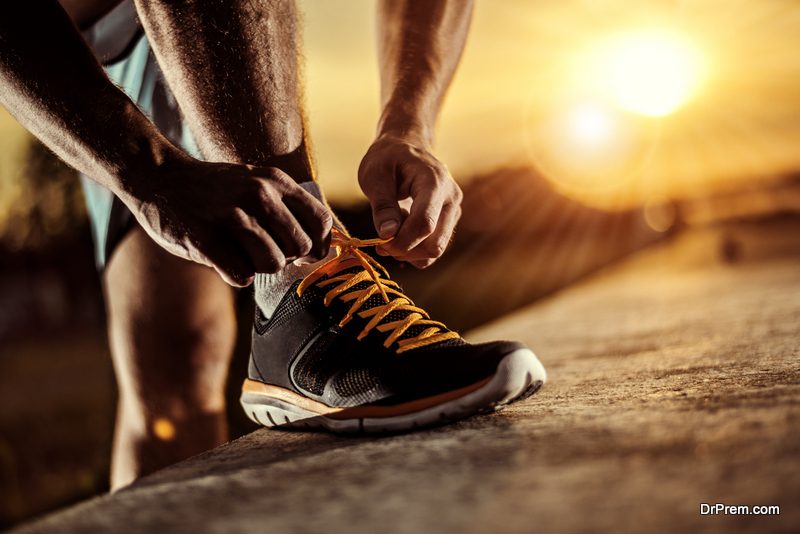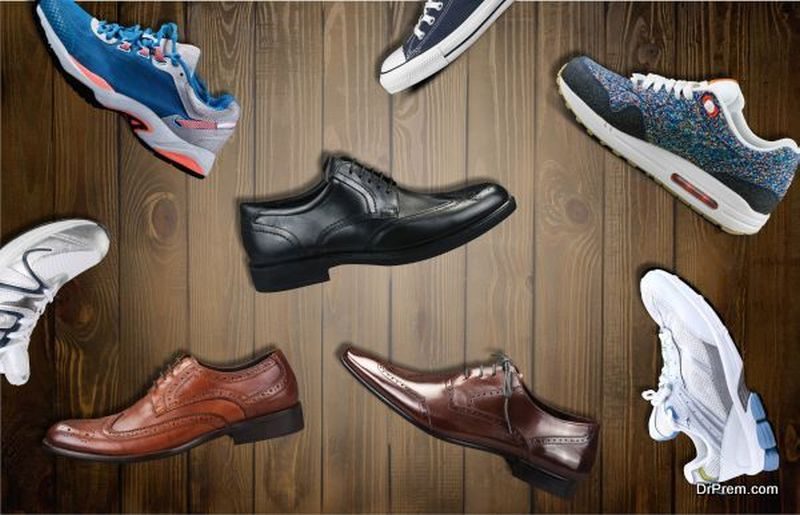Our feet carry us through life and we put them through a lot! Not only do our feet carry the weight of our entire bodies, but they also cushion the impact of exercise and movement and get stuffed in socks and shoes all day long.
Depending on your hobbies, occupation, and level of activity, choosing the right footwear is extremely important. Wearing shoes without the proper level of support can lead to unwanted medical conditions later in life, or even injury while performing certain activities. Here we’ll discuss which activities require a certain type of footwear and how the right choice will help keep you safe and healthy.
Road Running Shoes

If you plan to run a few 5Ks or run on your local roads during the morning or afternoon, you’ll need a different running shoe than if you plan to complete lengthy marathons. Your size and gender play a part in the shoe you select, as does the amount of cushion you require.
But did you know that your body will naturally adjust to the thickness of your shoe’s cushion? This means that you’re just as likely to get injured running with a thick cushion on your shoes than a thin one. And why is that? Because depending on the terrain in which you’re running and your stride, your body will make natural, manual adjustments to prevent injury. It does so by changing the stiffness of your legs. The more cushion in your running shoe means your leg stiffness will go up and the less cushion means it will go down. All of these adjustments are your body’s way of naturally protecting itself from injury.
So when you’re purchasing running shoes, the amount of cushion is determined by the wear and tear you’ll be placing on the shoes themselves, as far as length of use and frequency.
Running Shoes
Running shoes are no longer created equal. With so many different types of exercises popular today, from trail and road running to cross training and HIIT workouts, you can’t buy just one sneaker to meet all of your activity needs. Here’s a breakdown of which shoes will offer you the best support, dependent on the exercise or activity.
Trail Running Shoes
When it comes to trail running, there are several things to consider from weather conditions to incline and overall terrain. Trail running shoes will need more grip to better navigate rocks, mud, branches, and other debris. The “lug” length on a shoe refers to the length of the tread. The longer the tread, the less likely you’ll experience slips or slides on muddy surfaces. Navigating unsafe terrain without the proper footwear can lead to a sprained ankle, twisted knee, or worse.
What about waterproof trail shoes? These are only recommended for those people who plan to run in wet or moist conditions for a majority of the course. In order to be “waterproof”, these types of sneakers offer limited breathability, which means that moisture trapped inside the sneakers due to sweating will ultimately develop blisters.
Other outdoor activities that require a certain type of shoe or boot include hiking, hunting, and mountain bike riding.
Crossfit/HIIT Shoes
Crossfit and HIIT workouts are some of the most popular on the workout circuit today. Both crossfit and HIIT (high intensity interval training) workouts require participants to engage in high-intensity activities at a high rate of speed. Because of this, the right shoes need to offer stability. Traction and flexibility are also important elements during station activities such as side-shuffles, box jumps, and rope climbs.
Many of these workouts also involve to heavy lifting and dead lifts. Your feet act as anchors during weightlifting, which means you need shoes that feel stable and secure in place. These elements will help to ensure you keep proper form and avoid injuries including back muscle and lumbar strain.
Restaurant Business

That’s right, the gym and the trails aren’t the only place where proper footwear is key. If you work on your feet all day long or in a restaurant where wet and slippery surfaces are present, you’ll need the right footwear to help keep you safe. The best restaurant shoes offer tread designed to grip greasy surfaces.
Not only are shoes with slip-resistant soles important to prevent falls, but having a shoe that offers the right amount of support is key. The average restaurant worker spends hours a night on their feet, carrying heavy trays. This means strain on the back, legs, and even shoulders and neck.
Choosing the right size shoe is also important. If the shoe is too loose fitting, your heel will slip in and out of the back of the shoe, creating chafing and blisters. A comfortable restaurant shoe should offer some of the following features:
- Memory foam insoles
- Thick platforms
- Arch support
- Interior padding
- Moisture-wicking lining
Investing in a quality, well-constructed shoe means it will stand the test of time, considering most servers work an average of eight to twelve hours each day. And of course, you’ll want to consider the shoes appearance and your own personal style before purchasing.
Racing Shoes
The key element to racing shoes is that they are lightweight. You don’t need unnecessary weight on your feet, bogging you down and creating unwanted resistance. The shorter the race you plan to run, the lighter and the flatter the shoe can be. This is because you won’t be placing strain on your feet for an extended period of time. If you plan to run a longer race, you’ll want to invest in a slightly heavier, more weighted sneaker.
There is much debate over whether or not running on hard surfaces for long distances or without proper sneakers can negatively impact your knees, hips, back, and other joints. It was once believed that the repetitive pounding of your feet on the pavement would lead to knee osteoarthritis, or OA. But, new studies show that running might actually help protect your joints. How?
Average runners have an overall, healthier weight. And research has shown that individuals that are either overweight or obese, actually put more strain on their joints than runners do. Knee OA is caused by a breakdown of the knee cartilage. This can happen after years of stress, or due to injury.
Treat Your Feet Right
By choosing footwear that is designed for a certain activity, you are helping to keep your entire body safe and healthy. Before choosing a shoe, determine the activity or exercise you’ll be performing and what your body needs to function at its best.
With so many shoes available for all types of activity and intensity levels, there’s no doubt you can find the right fit.
Article Submitted By Community Writer




